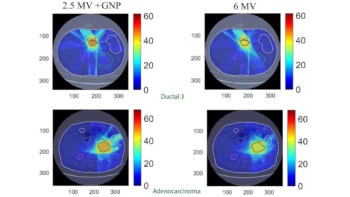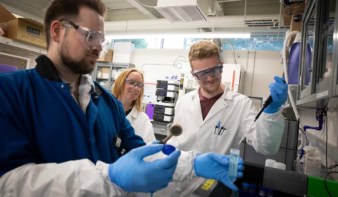
Medical physicists play a key role in the delivery of radiotherapy, ensuring that the treatment equipment is safe and accurately calibrated, and working with radiation oncologists to develop precise treatment plans tailored to each patient. But according to a new study from the University of California San Diego, they could help in other significant ways.
The study, presented by Todd Atwood at this week’s ASTRO Annual Meeting, found that by meeting with patients and explaining the technical aspects of their radiation therapy, medical physicists can reduce treatment-related stress and anxiety. “While the primary function of the medical physicist has always centred around the idea of designing and delivering safe and effective radiotherapy, the day to day responsibilities of medical physicists have adapted to meet the changing needs of patients in our field,” he explained.
Patients increasingly want to be involved in their treatments, but the information available about radiation oncology is too complex, which can lead to unanswered questions and increased anxiety. Patient stress, however, can negatively impact radiotherapy outcomes.
This dilemma led Atwood and colleagues to develop the Physics Direct Patient Care (PDPC) initiative. The idea is that the medical physicist establishes an independent professional relationship with the patient, meeting with them regularly and assessing how this impacts their anxiety and treatment satisfaction. “This is a great opportunity for us as physicists to use our skill set to see how we can help improve patient care,” said Atwood.
In the prospective clinical trial, also reported in the International Journal of Radiation Oncology Biology Physics, the team randomly assigned 66 cancer patients to receive either PDPC before and throughout their radiation treatment, or standard-of-care radiotherapy without PDPD. Those in the PDPC group received two consultations with a medical physicist: immediately before the CT simulation and prior to their first treatment.
During the consults, the physicist (who had undertaken a patient communication training programme) explained how the radiotherapy technology works, how a treatment is planned and delivered, and how patient safety is ensured during radiotherapy. Over the course of their treatments, all patients completed questionnaires regarding their anxiety, their understanding of the technical aspects of care and their overall satisfaction.
Patients in the PDPC group experienced significantly lower treatment-related anxiety in comparison with those who did not have the additional consults. “By the first treatment time point, we see a significant decrease in patient anxiety for patients receiving physicist–patient consults,” said Atwood.
The greatest difference between the two groups was seen in the patients’ technical satisfaction – how satisfied they are with their own understanding of the technical aspects of their care. While there was no difference between the two groups at baseline, patients that had a physicist consultation at their simulation appointment immediately expressed greater technical satisfaction compared with the control arm, a benefit that remained throughout until their last treatment.
Overall satisfaction – a measure of the overall patient experience – was also significantly higher after the first treatment for those in the PDPC arm compared with the control arm, and remained so until the end of treatment.

Medical physics explained in 22 tales
“This study provides evidence that expanding the scope of the medical physics profession to include these patient-facing responsibilities allows us to add more value to the field, as well as to the patients we treat,” Atwood concluded.
“Our patients don’t realize that we are just as capable of being science communicators as our wonderful physician colleagues,” commented Julianne Pollard-Larkin from the MD Anderson Cancer Center. “It is time to empower our physicists, show them that they can help our patients have a better treatment just by explaining the process.”



